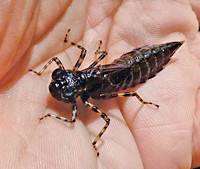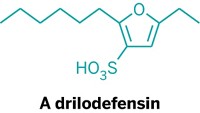Advertisement
Grab your lab coat. Let's get started
Welcome!
Welcome!
Create an account below to get 6 C&EN articles per month, receive newsletters and more - all free.
It seems this is your first time logging in online. Please enter the following information to continue.
As an ACS member you automatically get access to this site. All we need is few more details to create your reading experience.
Not you? Sign in with a different account.
Not you? Sign in with a different account.
ERROR 1
ERROR 1
ERROR 2
ERROR 2
ERROR 2
ERROR 2
ERROR 2
Password and Confirm password must match.
If you have an ACS member number, please enter it here so we can link this account to your membership. (optional)
ERROR 2
ACS values your privacy. By submitting your information, you are gaining access to C&EN and subscribing to our weekly newsletter. We use the information you provide to make your reading experience better, and we will never sell your data to third party members.
Environment
Mercury's Paths In Rice
Mass spec study of the toxic metal advances understanding of plants' chemical response to mercury contamination
by Carmen Drahl
June 29, 2009
| A version of this story appeared in
Volume 87, Issue 26
Toxic mercury species tend to accumulate in living things, and researchers would like to better understand the process in an effort to prevent it. Recent research suggests that methylmercury in rice grains is more abundant than would be expected from ratios of mercury species in soil. Inspired by that work, Eva M. Krupp, Jörg Feldmann, and colleagues at the University of Aberdeen, in Scotland, combined electrospray and inductively coupled plasma-mass spectrometry to look for mercury species in the roots and shoots of rice plants (Chem. Commun., DOI: 10.1039/b823121d). Their MS technique allowed them to identify previously unknown Hg-phytochelatin complexes in the roots. Moreover, they found that these phytochelatins, small peptides that detoxify heavy metals in plants, can sequester Hg2+, but not methylmercury. This finding points to a different uptake and transport mechanism for methylmercury in rice, compared with Hg2+, and might explain why it's disproportionately able to reach rice grains, Krupp says. "This study advances our understanding of how plants respond to mercury contamination in soil and water," says mercury pollution researcher Dan Cristol of the College of William & Mary.






Join the conversation
Contact the reporter
Submit a Letter to the Editor for publication
Engage with us on Twitter